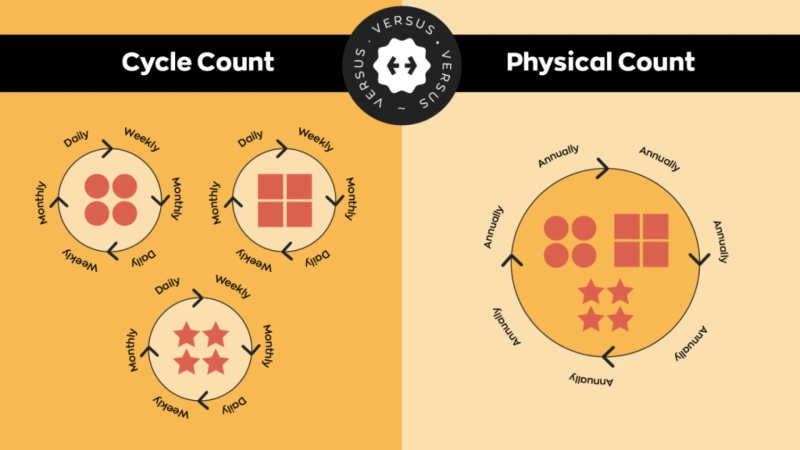Physical Inventory vs Cycle Counting: Choosing the Best Method
Introduction
Inventory accuracy is a linchpin of effective inventory management. Maintaining precise inventory records is not just good practice; it's a critical factor in a business's overall success. When it comes to inventory counting methods, two approaches dominate the landscape: physical inventory counting and cycle counting. In this blog post, we'll dive into the intricacies of these two methods, weigh their pros and cons, and help you decide which one suits your business needs best.
Physical Inventory Counting: The Manual Marathon
Picture this: employees diligently count every item in your inventory—manually. That's physical inventory counting in a nutshell. This systematic process is devoid of fancy machines; it relies on human effort. The primary goal? To verify if the recorded inventory tally aligns with the actual physical count. It's also a means of flagging any discrepancies that might raise their mischievous heads.
There are four major flavours of physical inventory counting:
Complete Inventory Count: Usually conducted at the end of a financial year, this involves counting every single item. It's like a comprehensive inventory health check.Partial Inventory Count: Think of this as routine inventory spot checks. Only a portion of your inventory is counted, but it's done frequently to maintain accuracy.ABC Analysis: Items are sorted by value, and the most valuable ones are counted regularly, while less critical ones get less attention.Blind Inventory Count: The recorded count remains a secret during the counting process to ensure accuracy, making sure employees don't get swayed.This method can be a stalwart ally in maintaining accuracy, detecting theft, and identifying damaged goods early on. However, it's a time-consuming process susceptible to human error. Plus, its results are short-lived due to the constant flow of inventory.
Cycle Counting: The Precision Puzzle
Now, imagine a different scenario: instead of counting everything all at once, you break down your inventory into manageable chunks and count different chunks at different times. That's cycle counting. It's less intrusive, quicker, and maintains accurate records over the long haul. This approach minimizes the need for full-scale physical counts.
Cycle counting offers some distinct perks:
Real-time Visibility: By consistently counting smaller subsets of inventory, you get a continuous snapshot of your inventory's health.Early Discrepancy Detection: Since counts are frequent, any discrepancies get spotted sooner, allowing timely intervention.Cost and Time Efficiency: Less disruption, less labor-intensive, and still maintaining accuracy.However, don't let the roses blind you to the thorns. Setting up cycle counting can be complex, demanding careful planning and execution. And since you're counting in portions, the coverage in each count is limited.
Conclusion
Ultimately, the choice boils down to your business's unique needs. Physical inventory counting is suitable for smaller businesses with manageable inventory sizes. It's like a grand annual inventory event. On the other hand, cycle counting is a more modern, efficient approach that fits businesses of all sizes. It's the subtle art of maintaining accuracy without upheaval.
So, which method should you lean towards? Like any business decision, there's no one-size-fits-all answer. Consider your inventory size, the resources you can allocate, and your commitment to maintaining accuracy. Whether you choose the marathon-like counting or the precision puzzle of cycle counting, the goal remains the same: keeping your inventory in check for a flourishing business


